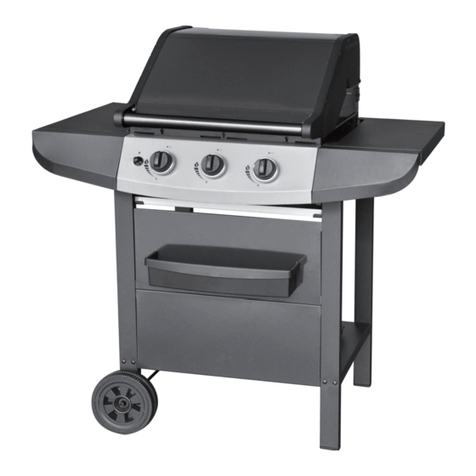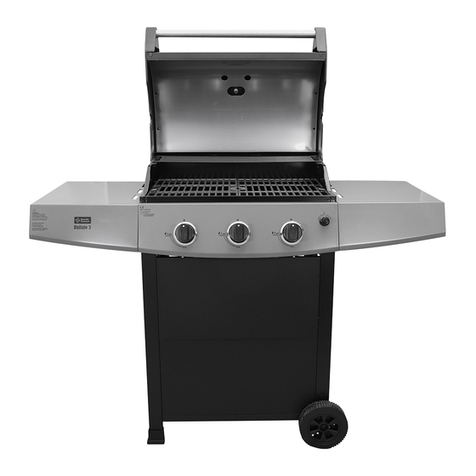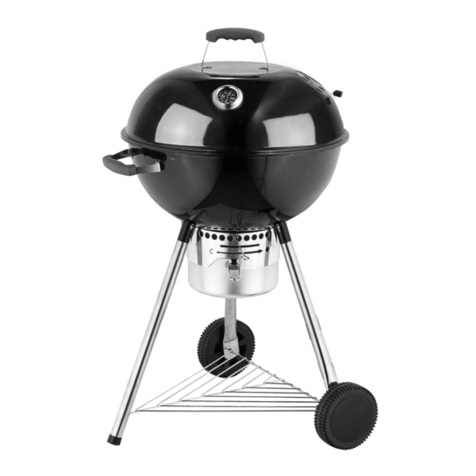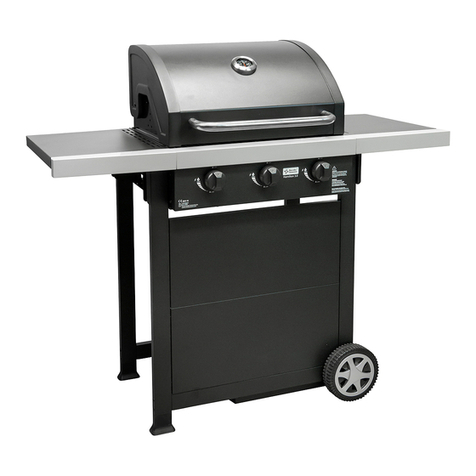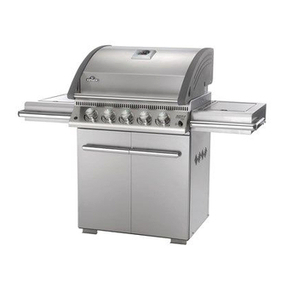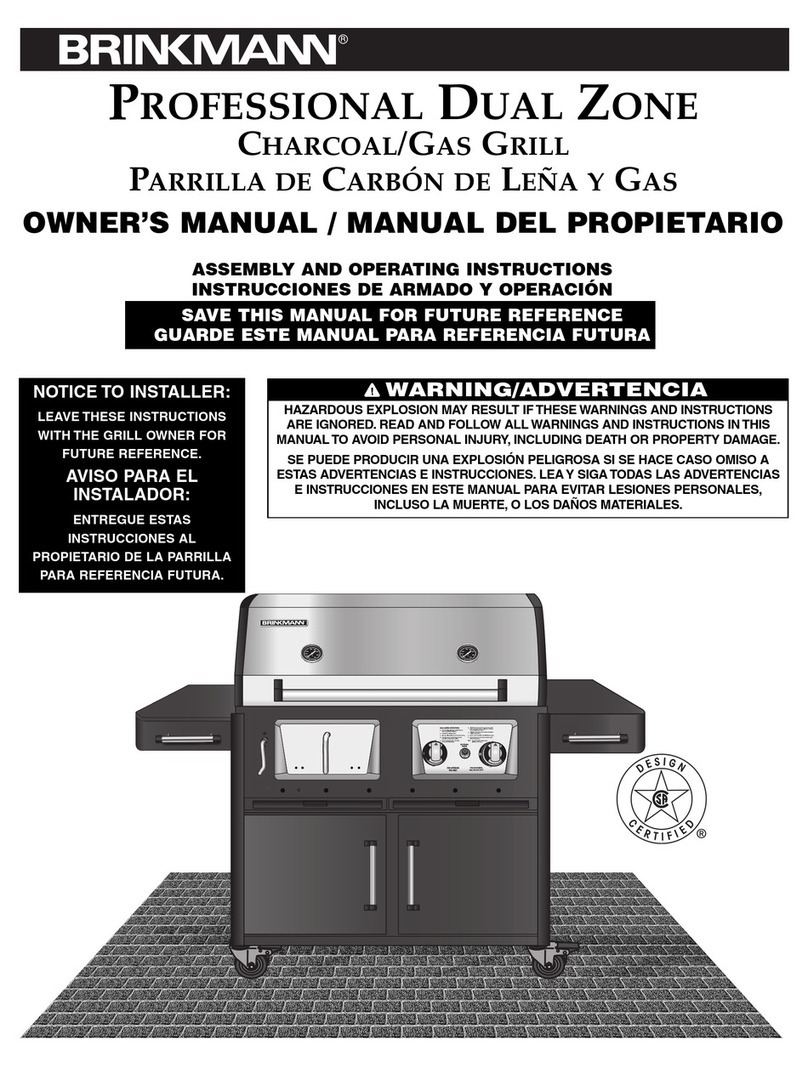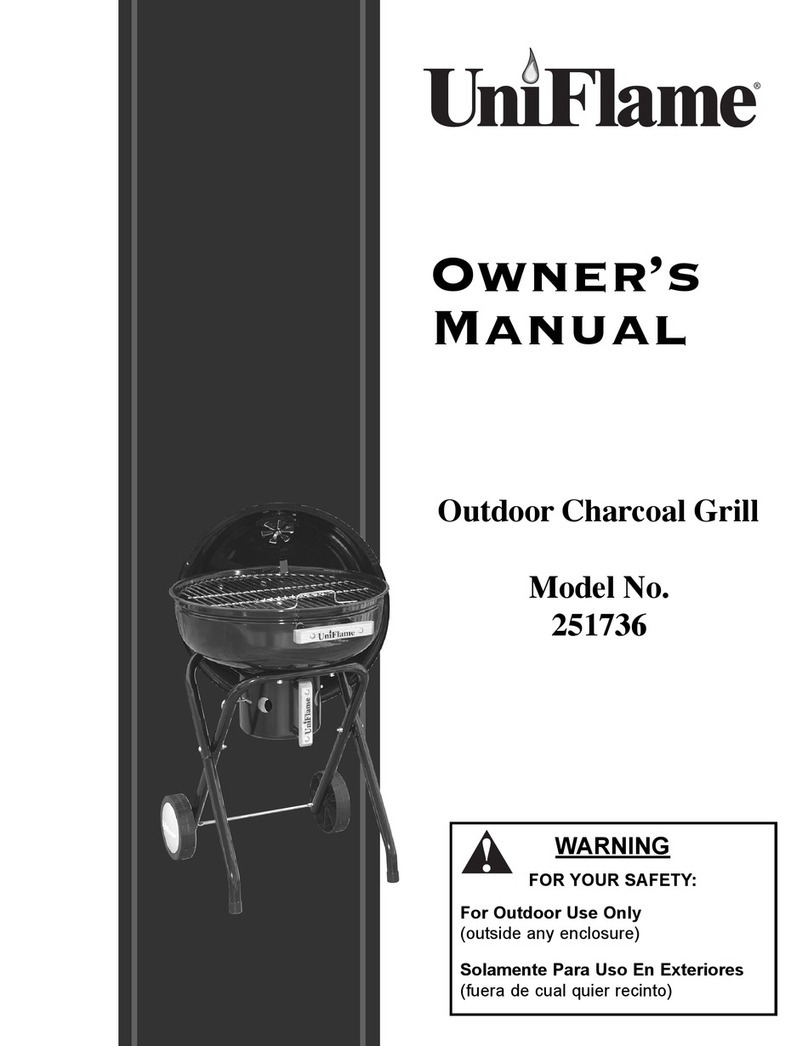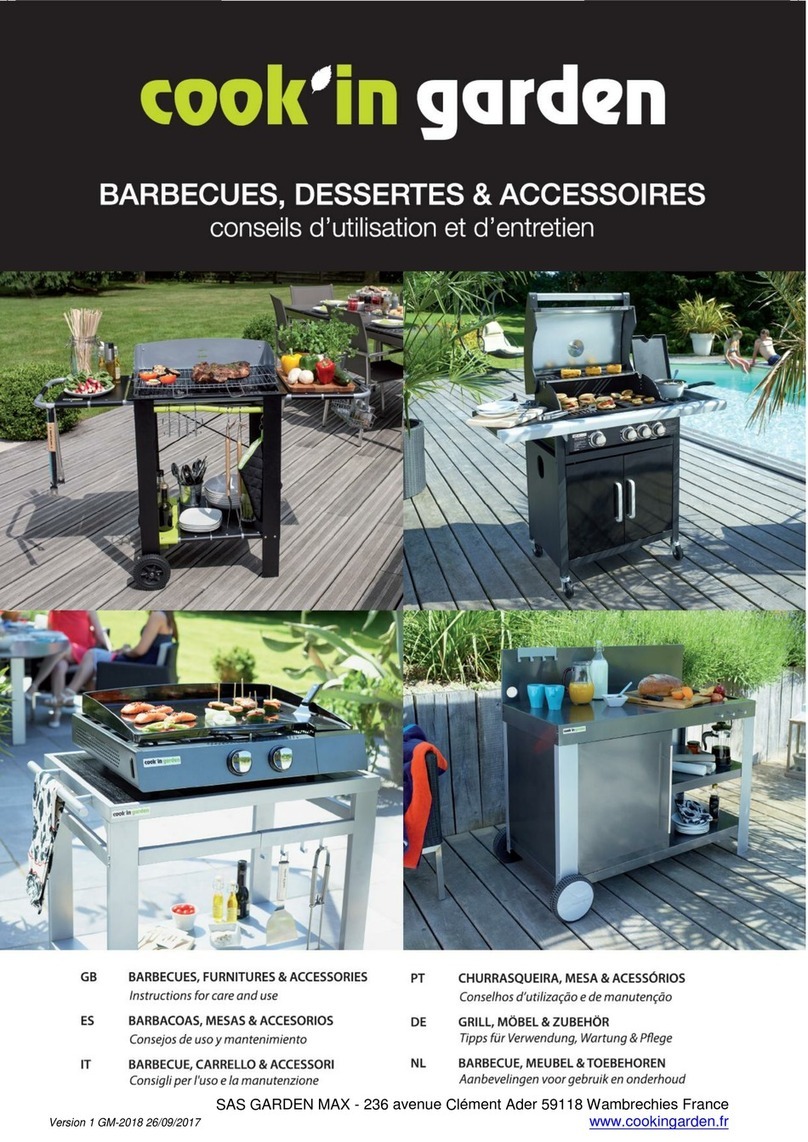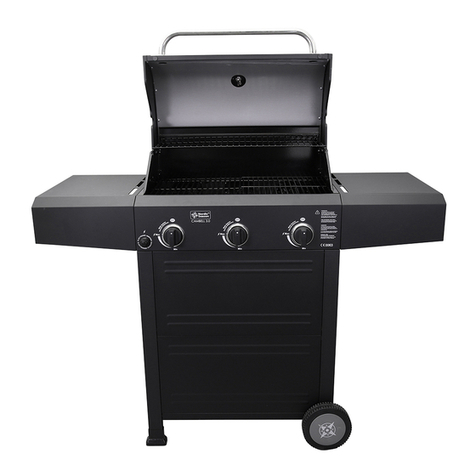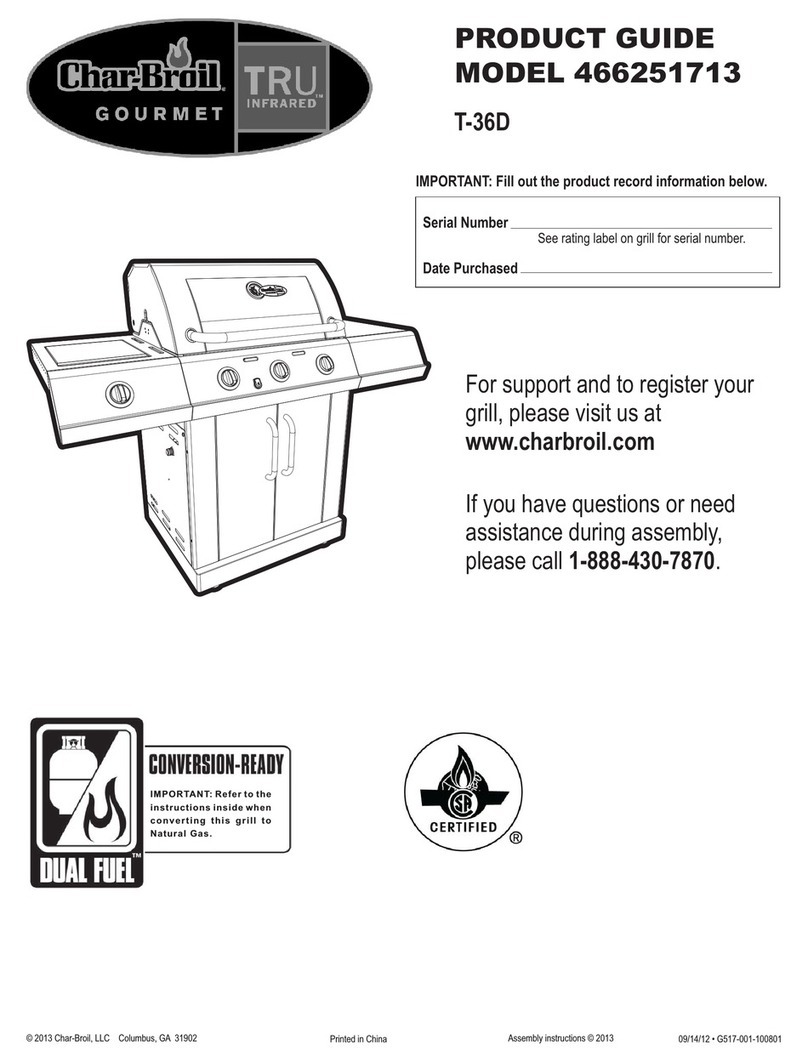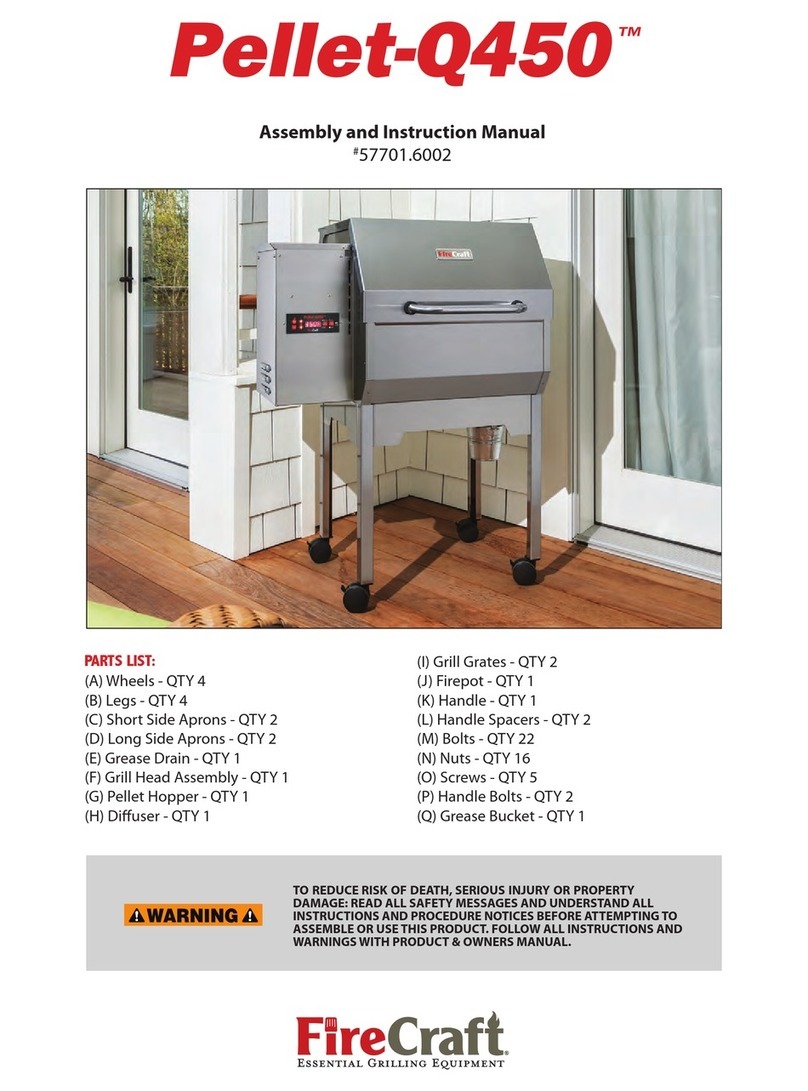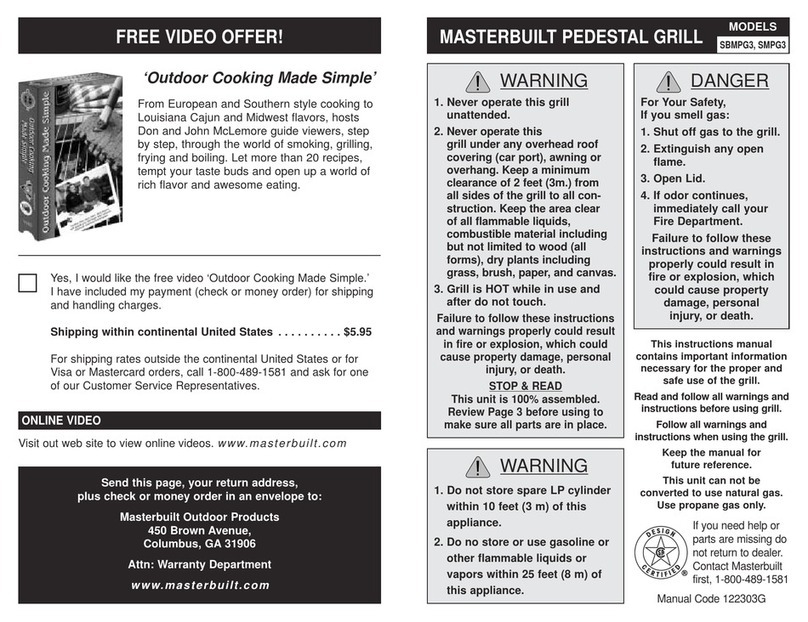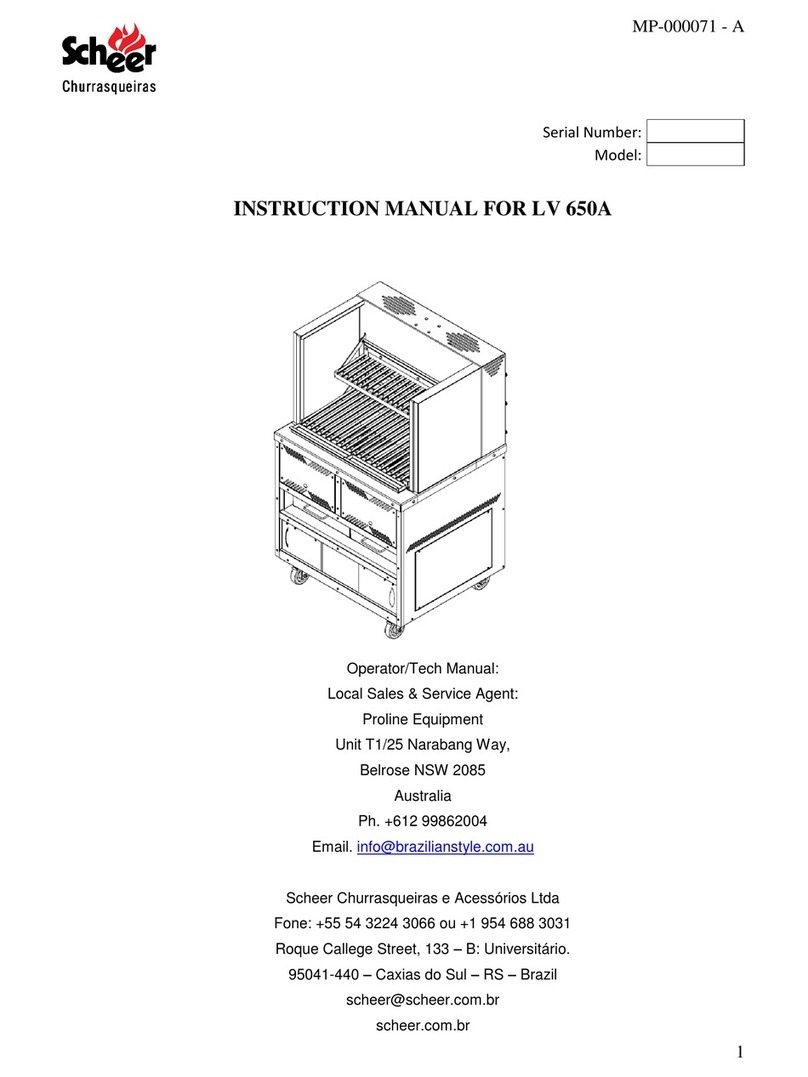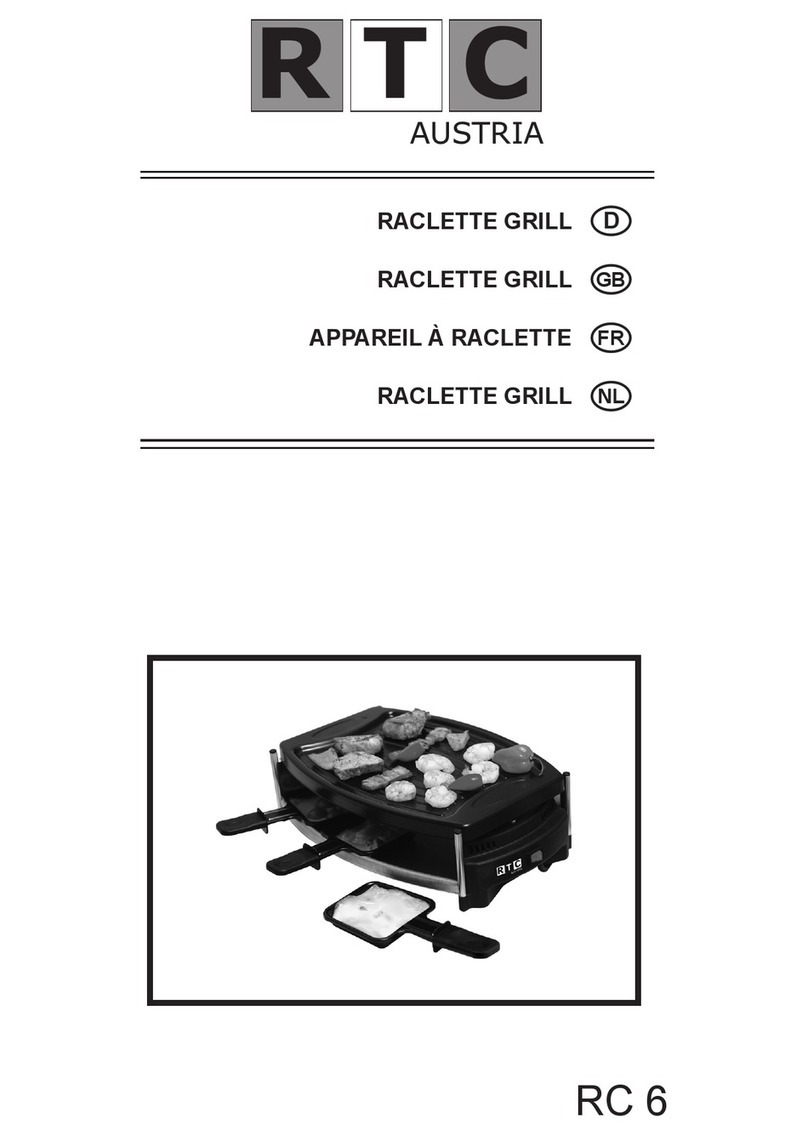
MOUNTING AND USE
BEFORE BEGINNING THE ASSEMBLY
When selecting a place to assembly your barbecue, favor those places that are external and
covered, sheltered from wind, humidity and direct sunlight. Selecting a good place for your
grill, will ensure that you enjoy greater comfort in its use and the maximum output in the grilling
activity. Plus, your grill will keep its original look for a longer period.
The grill must necessarily be set over a at surface, rigid and level. If the base surface does
not meet the conditions required, the assembly will be decient and upset the look, structural
integrity and efcient operation of the grill.
For the assembly of plan grills, the use of mortars with high resistance cement and quick dry
cement is not allowed, e.g. white cement, aluminium cement or similar, refractory cement,
or cement mortar for laying ceramics. You must use a mortar with 20% low resistance cement
and 80% ne sand. As an alternative you may use a re-resistant silicon with high temperature
resistance. Use of silicon will ensure a better nish in the joints, especially in those models that do
not require nishing or painting (plan series, plan fold, ego and kitaway).
The grill must be installed to allow the dilation/contraction typical for this type of product,
otherwise there could be ssures. To prevent this do not push the grill directly onto a wall, and
leave a gap of approximately 5cm. Also use a very thin layer of bricklayer’s mortar or silicon to
ensure the natural dilation between the components. The elements that constitute the surface
under the re should simply be laid without use of mortar (see assembly pictures, step-by-step)..
IN OPERATION
On rst time use of the grill, the fuel employed must burn for a minimum of 30 minutes before
beginning to grill after assembly and on every occasion, the grill must be very dry before
beginning to use.
If the grill is installed on a place that is not covered or very humid, always make sure that the
areas exposed to high temperature are very dry before beginning to use. In case there is
humidity, dry with low re and gradually move to a normal use, as the humidity vanishes.
Note: As fuel, use of vegetable charcoal and rewood is allowed. Maximum load of 13 dm3, do
not reload the grill before the previous load has been consumed.
Do not ignite the charcoal or wood using liquid fuels (e.g. alcohol, petroleum, and accelerant
gel). Use only solid accelerant. On rst time use of the grill, you should make a small re only
with charcoal. Gradually increase the intensity of the re. (Always respect the recommended
maximum loads). On those rst few uses of the equipment, avoid intense re since the concrete
and metallic components will need to adapt to the conditions of future use. The resistance and
performance of your grill will depend upon the rst few uses. Remember that the main objective
of the combustion of rewood or charcoal is the production of embers necessary for grilling your
food in an effective way. When preparing the re, allow the formation of a layer of ashes over
the embers before beginning to cook the food.
After using the grill, you may remove the embers that have not been consumed and keep them
in a reproof box, so that they may cool down, for a later use. Under no circumstances should
you throw water to wash the grill, unless it has completely cooled down. Sudden temperature
shifts will cause ssures or even break-up of concrete components..
MAINTENANCE
To clean the grill, use only water and a cloth or abrasive sponge, “scotch brite” type. The
concrete components can also be cleaned occasionally with water and a nylon hairbrush.
When you clean the concrete components with water, remove all the other components of
metal so that they do not become wet.
